KEW 2016’s action-packed schedule continued yesterday with an off-campus trip to the Library and Archives at the Royal Botanic Garden. Not wanting to miss the opportunity to find out more about the collections – which include the intriguing category, ‘Living Collections’ – I went along for the ride.
We were introduced to the Library by Head of Library Services, Lorna Mitchell, who explained some of the 400 year history of the Garden and described the variety of collections that the Library and Archives house. The Library has recently reached 10% in their programme to digitise collections, while continuing to provide over 70,000 monographs and hundreds of thousands of journals to users. Lorna showed us some of the Library’s rare and unique collections, including a letter from Charles Darwin and beautifully detailed plant drawings by Lilian Snelling, who drew at the Botanics for five years in the early 20th century.

A quick tour around the Glasshouses, by the Living Collections Curator, was a real highlight, and covered topics about the conditions needed to house the vast array of plants, from all corners of the globe, in the collections.
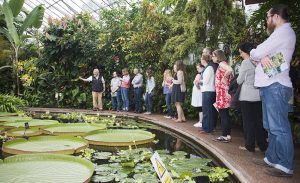
We were also shown around the Herbarium by Dr David Harris. The Herbarium began as a Victorian exercise in categorisation and collecting, which continued with the increasing professionalisation of the sciences. Here, we looked at flowers preserved through drying and pressing in the late nineteenth century, which we learned (to much surprise!) are sent out on loan to other institutions and are encouraged to be annotated. With permission, and after careful consideration, some scientists are even allowed to use a piece of the specimen for experimental purposes: following rehydration in boiling water, a plant will take back its original form (but not colour). However, this contrasts with present day collections policy, which dictates that plant samples are preserved through a similar manner of drying and pressing, but also photographed and GPS-tracked. To our relief, additional samples are also collected purely for the purpose of scientific experiments: no more trimming off pieces of the collections!

There’s some fascinating work underway at the Botanics, and it was brilliant to see collections from a very different perspective, and facing unique challenges: how do you categorise a plant that isn’t recognisable? How do you keep track of plants as they evolve – can we simply distinguish between ‘living’ and ‘dead’ plant collections? And how can we best preserve these collections for future use – be this practical or theoretical? We had a great afternoon pondering the significance of these, and many more questions besides – many thanks to the Botanics for taking the time to talk to us about their work.


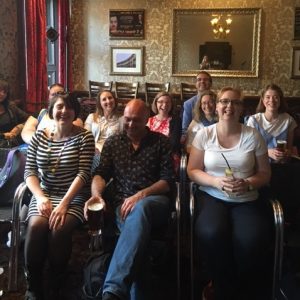
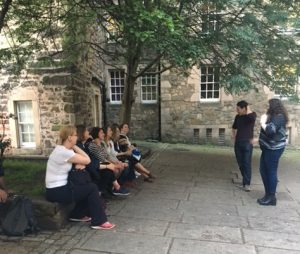
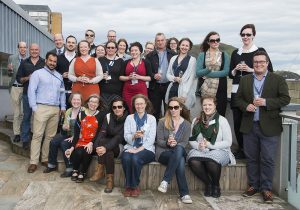






 It is fair to say that the preservation of digital material, as an issue, it not new to anyone and that was certainly true of those present at our Knowledge Exchange Week event. We all, whether as individuals or as part of a wider group, produce digital content in ever growing volumes. Whilst the majority of that content is arguably ephemeral and irrelevant, some will be of sufficient value to warrant preservation and the effort required to carry that out. However, digital preservation is a discipline that is continually evolving. The global digital landscape, driven by commercial gain, is constantly changing. New tools, new devices and new platforms give rise to new preservation challenges, as does trying to engage with old, out of date technology to salvage content from the clutches of media decay and bit rot. The digital archivist appears to be always working on the back foot.
It is fair to say that the preservation of digital material, as an issue, it not new to anyone and that was certainly true of those present at our Knowledge Exchange Week event. We all, whether as individuals or as part of a wider group, produce digital content in ever growing volumes. Whilst the majority of that content is arguably ephemeral and irrelevant, some will be of sufficient value to warrant preservation and the effort required to carry that out. However, digital preservation is a discipline that is continually evolving. The global digital landscape, driven by commercial gain, is constantly changing. New tools, new devices and new platforms give rise to new preservation challenges, as does trying to engage with old, out of date technology to salvage content from the clutches of media decay and bit rot. The digital archivist appears to be always working on the back foot.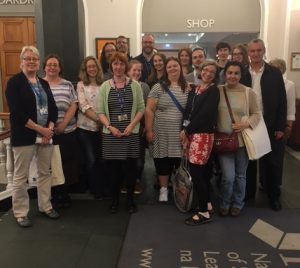




 Now we just need to find someone who can read it!
Now we just need to find someone who can read it!